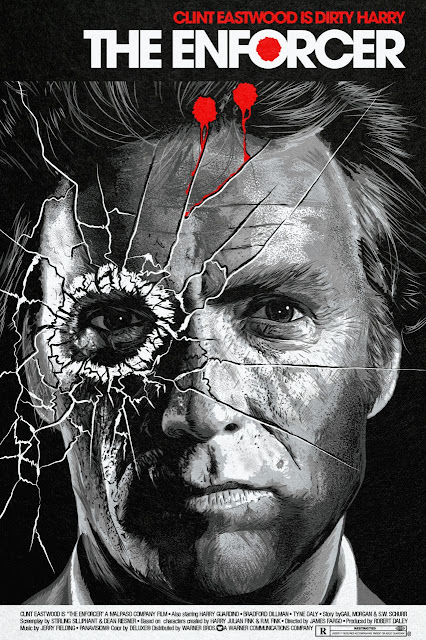CAHIERS DU CINEMA produces a genuine master class
 I had a feeling this book was going to be something a little bit special. Culminated from nearly 30 years of interviews, it certainly sounded like something worth holding your breath for. But Eastwood fans have been here before, and often been disappointed with the results or the inexcusable amount of general inaccuracies that have appeared in publications over the last few years. I’m pleased to report that this particular book suffers from no such problems. It is quite simply, an extraordinary piece of work which deserves to be singled out.
I had a feeling this book was going to be something a little bit special. Culminated from nearly 30 years of interviews, it certainly sounded like something worth holding your breath for. But Eastwood fans have been here before, and often been disappointed with the results or the inexcusable amount of general inaccuracies that have appeared in publications over the last few years. I’m pleased to report that this particular book suffers from no such problems. It is quite simply, an extraordinary piece of work which deserves to be singled out.

On first reading Wilson’s book, I was struck how easy I fell into it, almost encapsulated by it, but why? I have always approached every new book on Eastwood with an equal amount of enthusiasm, yet found myself ‘flagging’ as the same stories seemed to inherently begin to surface. It didn’t take long to establish what exactly makes this such a rewarding read; it is simply so refreshing, not only in its content, but in its delivery. What makes it particularly special of course is that it is Eastwood’s own words, from Eastwood’s own perspective. Eastwood engages in countless question and answer sessions with complete lucidity. Wilson cleverly applies a simple framework of Eastwood’s career. He allows his subject the freedom to expand upon any given subject that Wilson intelligently enquires about. The layout is fuss free, simplistic and to the point. Wilson’s questions are presented in Italic, Eastwood’s responses are not. Every page is tightly crammed, allowing only for the minimal of margin widths and header space.

For Eastwood admirers the world over, this book is certain to contain new and informative citations, and all from the man who knows best. Opening Eastwood on Eastwood is much like opening a bottle of single malt, preserved and left to mature for almost three decades. Its content is both rich and revealing. Wilson’s questions are answered with confidence and precision. Eastwood’s speaks with an undeniable ‘purity’ and honesty. His responses are intelligent and as we would come to expect from the likes of past masters such as Hitchcock or Ford. This trusted form of dialogue between Eastwood and Wilson allows Eastwood to expand on his subjects with ease. Many questions are discussed and explored.
Why did he choose to make risky projects when he could have sat back on his laurels?
How did he successfully manage to make personal pictures in a system controlled by the studios?
How did Eastwood arrive at the decision to become a director?
 Everything in these pages makes for an incredibly insightful read. Each page is beautifully presented on quality stock paper (I was constantly thinking I had two pages stuck between my finger and thumb) and very well illustrated throughout. While this book does come with a rather hefty price tag (see below), I must also add that you certainly get a lot for your money. At 240 heavy pages, there is a lot of reading to be had. Consider perhaps, where else are you ever likely to find a book that contains so much of Eastwood’s own words..? And that’s really where my considerations would end. I’ve certainly been lucky enough to read most of the Eastwood books that have been published. But in my opinion; I would certainly rank this as one of the most important and most significant books on Eastwood to be published in a very long time.
Everything in these pages makes for an incredibly insightful read. Each page is beautifully presented on quality stock paper (I was constantly thinking I had two pages stuck between my finger and thumb) and very well illustrated throughout. While this book does come with a rather hefty price tag (see below), I must also add that you certainly get a lot for your money. At 240 heavy pages, there is a lot of reading to be had. Consider perhaps, where else are you ever likely to find a book that contains so much of Eastwood’s own words..? And that’s really where my considerations would end. I’ve certainly been lucky enough to read most of the Eastwood books that have been published. But in my opinion; I would certainly rank this as one of the most important and most significant books on Eastwood to be published in a very long time.
Yes, seriously, it is that good…
Eastwood on Eastwood is published by Cahiers du cinema and available through Phaidon Click here for direct link.
Price £39.95, $59.95, euro 49.95, Can $65.00, Aus $95.00
A very special thank you to Kara Reaney and the good people at Phaidon Press for their support and contribution.
~The Clint Eastwood Archive~



























.jpg)














